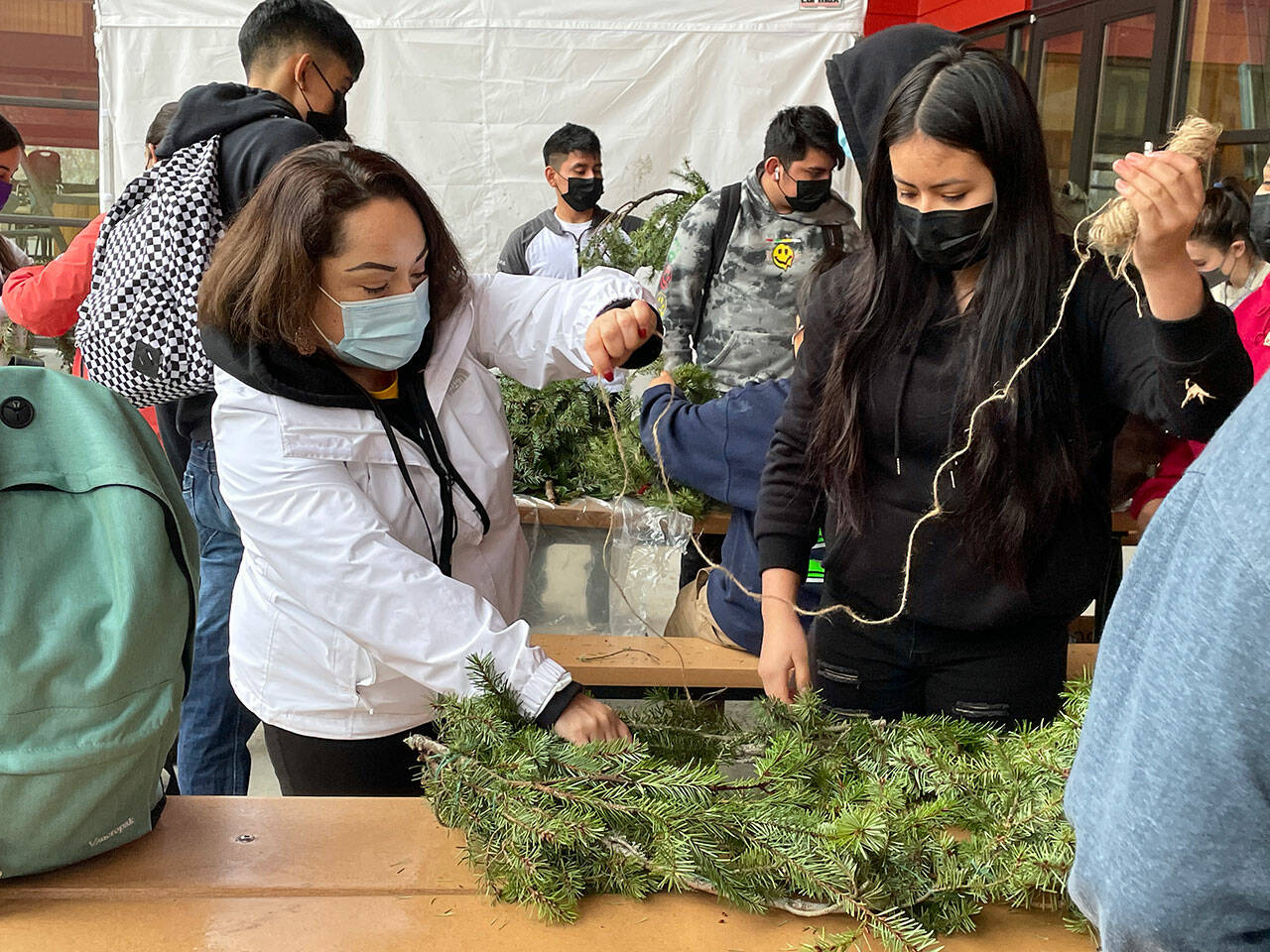By Peter Woodbrook
For Vashon Island School District
For many families in the Vashon Island School District, the school day is just another of the 365 days in the year.
For families who do not primarily speak English at home, life can be more complicated as they attempt to engage in a complex system while navigating the challenges of language barriers. Helping break down those barriers is the world of Nidia Sahagun.
Sahagun is the district’s family engagement coordinator, whose primary focus is to support culturally, racially, and ethnically diverse families and students, roughly 27% of the district population, to ensure equity in academic outcomes and improve students’ sense of belonging.
“This work is making sure we focus on the cracks in our system and get support and attention so all students can graduate,” said Sahagun. “We want to make sure we don’t have any families feeling left out or lost because of language barriers.”
Sahagun interacts with both families and students throughout the day. She mentors the LatinX student clubs at McMurray and Vashon Island High School and has helped the students with a variety of cultural activities and recognition, including working with families in setting up ofrendas (alters) in each school during this year’s Dia de los Muertos, a tradition that started at Chautauqua Elementary many years ago.
Much of her day is spent connecting and engaging with non-English-speaking families and helping meet their individual needs, both within the school district and also by connecting them with a wide range of related organizations and resources on the island.
Sahagun’s work grows from the roots established by previous district employees, including Sally Adam, who retired last year after 15 years of working with Latinx families at Chautauqua and Comunidad Latina de Vashon and other community organizations. The major difference in the role, said Director of Teaching and Learning Dr. Stephanie Spencer, is that Sahagun operates at a district-level position, PreK through 12, rather than a specific school building.
“When you have someone hired in a district-wide role, you have a much better alignment to our core mission and values,” said Spencer. “Nidia’s position is focused, deliberate, and system-wide, and it helps minimize the number of people the families need to engage with if they have students in more than one school or program.”
As Sahagun explains, for some Spanish-speaking families, in particular, they are not only new to the district but are also new to the country, and the American school system is very different from their home countries. Basic information that sounds simple to most residents is more difficult to understand — such as what happens during the school day, how to call in an absence, and many other things.
“I am that bridge that helps the families be heard for their needs,” said Sahagun. “I also operate as a conduit in the other direction, from the district to the families, to help make them aware of the information and support the school can provide.”
Initially, the goal of Sahagun’s work is to help create family autonomy, so that non-English speaking families know who to go to for questions, what resources are available, and how they can fully participate in the school system.
“Essentially, we are working to ensure families have access and feel connected to the educational experience,” said Spencer. “This is all of us working together as a community to ensure all of our students develop a strong sense of belonging alongside strong academic skills.”
The work is a slow and steady process, but both Sahagun and Spencer feel the district is moving in the right direction. Eight of 12 families participated in a recent Latinx parent/family meeting at the high school — a good number and one both Sahagun and Spencer would like to see as high as possible. Additionally, many families have engaged in different strategic planning events since mid-October, making sure their voices are heard and sharing ideas help to shape the direction of the school district for years to come.
“As a district, we need to continue to develop trust and familiarity, so that our families know who is who, what everyone’s roles are, and that as families they are always welcome,” said Sahagun. “We are paying attention to each family’s needs and constantly looking at the ways we can improve.”
By engaging directly with families, it helps assure that issues and problems are not lost or diluted as word travels through the grapevine. As Spencer explained, a family might say they need tech support, but that could mean anything from lack of internet to problems with specific applications, to needing help with specific devices such as phones, Chromebooks, or laptops.
“Through Nidia’s work, I think we as a district are getting a clearer picture of what the individual needs are, and it allows us to be more responsive, more direct, and more strategic in our solutions,” said Spencer. “On the flip side, families can see us working to address problems, see themselves as collaborators in the problem-solving process, and hopefully help them to feel respected, more comfortable, and more involved in our district community.”


